US President Extends Emergency State Concerning Iran
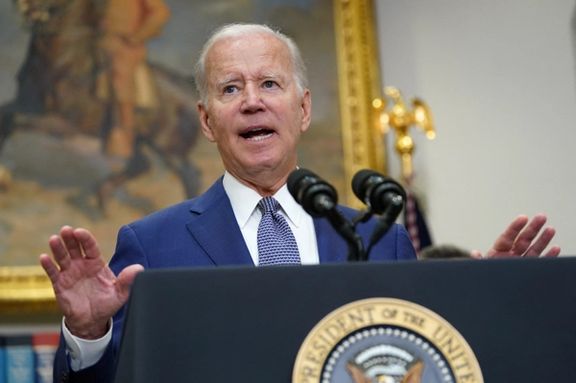
US President Joe Biden has extended the state of emergency regarding Iran for another year, which would keep US sanctions imposed following the 1979 hostage crisis still in effect.

US President Joe Biden has extended the state of emergency regarding Iran for another year, which would keep US sanctions imposed following the 1979 hostage crisis still in effect.
Joe Biden renewed the emergency with respect to Iran, pursuant to the International Emergency Economic Powers Act.
Biden said on Tuesday that “Our relations with Iran have not yet normalized, and the process of implementing the agreements with Iran, dated January 19, 1981, is ongoing. Biden said in a statement published on the White House website, “For this reason, the national emergency declared on November 14, 1979, and the measures adopted on that date to deal with that emergency, must continue in effect beyond November 14, 2022.”
The national emergency was announced when radical students in Tehran seized the US embassy and took hostage dozens of diplomats, staff and guards.
The decision by then-president Jimmy Carter was meant “to deal with the unusual and extraordinary threat to the national security, foreign policy, and economy of the United States constituted by the situation in Iran.”
The extension of the state of emergency in relation to Iran comes at a time when negotiations to revive the 2015 nuclear agreement have stalled, with the White House saying it is no longer focused on that.
The suppression of the current antigovernment protests in Iran as well as regime’s deployment of drones to Russia to be used in Ukraine war have also triggered a new wave of sanctions against the Islamic Republic.
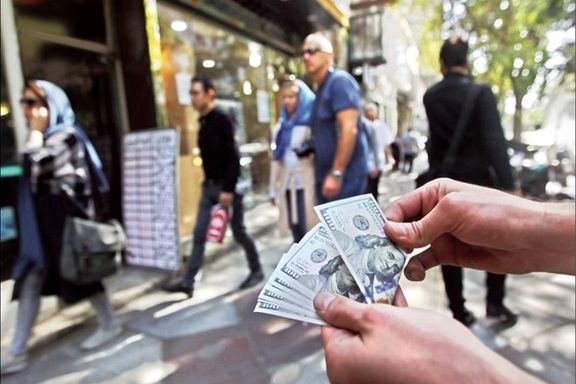
Iran’s national currency has lost 16% of its value during the past week, as the government prepares to submit next year’s budget bill to the parliament soon.
Iranian government’s annual budgets have faced annual deficits of at least 30 percent since 2019, when the United States imposed sanctions on the country. During this time, the government had to borrow more heavily from domestic banks, especially the Central Bank, and other financial entities to fill the budget gap.
Another major government revenue source is profits it makes when the rial loses value against major currencies, enabling the government to sell its foreign currencies at higher prices in open markets and pay salaries and other obligations.
According to the International Monetary Fund’s latest report, released on October 31, thanks to higher oil exports and prices, Iran’s total exports is expected to increase by 41% year-on-year to above $121 billion in 2022. For comparison, the figure was only $54 billion in 2020.
Of course, this figure is an estimate, since official information about how much oil Iran exports and how much foreign currency it actually receives remain state secrets, due to US sanctions.
On the other hand, Iran’s trade turnover balance is expected to stand at plus $35 billion this year, or three times more than in 2021. This value is equal to 81% of Iranian government’s budget, based on the current USD rate in Iran (1USD:367,500 rials).
The Iranian rial has lost about 47% of its value since July 2021, when the new government, headed by Ebrahim Raisi took office.

Regarding the fact that Iranian government’s oil exports during the current fiscal year (started March 21) is estimated to be above 1 million barrels per day (mb/d) or 40% more than last year, with higher global oil prices, its revenues have increased significantly.
Therefore, the government should have enough foreign currency reserves to prevent the de facto devaluation of the rial.
Iran’s oil exports had dropped to around 200,000 barrels a day in 2019-2020 during the Trump Administration which was hawkish in sanctions enforcement. As soon as Joe Biden was elected president, Iran began shipping more oil to China and the daily exports quadrupled by 2022.
Figures published by the central bank show government borrowing from this bank has not increased since July 2021, despite concerns by economists that more money needs to be printed to finance government operations.
However, central bank figures also show that liquidity has increased by 12% during this period, a fact that indicates the government continues printing money in huge amounts, most probably due to selling of foreign currencies at higher rates to the banks and exchange markets.
IMF predicted that Iran’s broad money growth to stand at 47.5% in 2022, 8.5% more than 2021.
This leaves many questions unanswered. If Iran has tripled its exports in two years, why the currency is falling and why It has such high budget deficits. Just this week, the government announced that Supreme Leader Ali Khamenei has authorized the use of more foreign currency reserves to bridge the deficit.
A Supreme Accounting Office report covering the period March 21- May 20 showed in July that except tax revenues, all other major sources of income grossly underperformed.
The government realized just 37 percent of the projected budget revenues in this period, but the most notable number in the report was how little oil income was collected. While 79 percent of tax revenues were realized, only 15 percent of oil export income entered government coffers. While barter of oil for goods is one possible explanation, rosy predictions about cash in government pockets might be misleading.
This remains another unanswered question, that outsiders like the IMF may never be able to figure out.
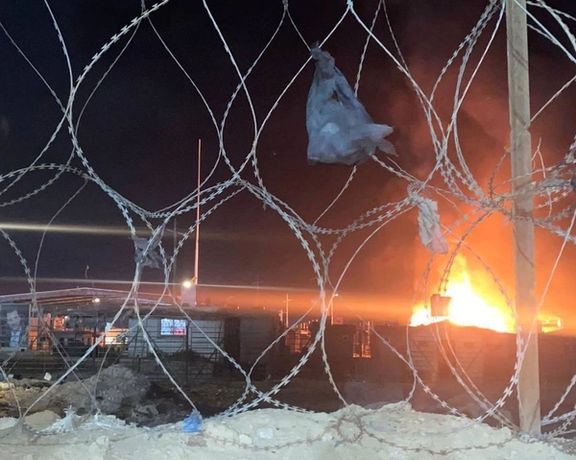
Iran’s state broadcaster reported that “a US drone” attacked a convoy of 22 tankers near the Iraqi Syrian border Tuesday night, while others report high casualties
The source says eight tankers were targeted and two of them caught fire, forcing the convoy to stop moving. However, Iran claims still 14 tankers are in the Iraqi territory.
Iran's state broadcaster had earlier announced that American warplanes had launched airstrikes against a convoy carrying logistics along the Iraqi-Syrian border.
Sabereen News, which is affiliated with the Revolutionary Guard says 25 fighters have been killed and 21 others injured so far but provided no details about the nationality of the military personnel. It says the fuel shipment was supposed to be delivered to Lebanon.
According to AFP, a spokeswoman for the US-led coalitionfighting the remnants of the ISIS in Iraq and Syria said that the strike was not carried out by the United States or any other coalition country.
Meanwhile, the UK-based Syrian Observatory for Human Rights stated the strike hit a convoy of “fuel tankers and trucks loaded with weapons and most of those killed were militiamen.”
Pro-Iran militias have long been present near the Iraq-Syria border in Deir ez-Zor province and for several times Iran and the US launched reciprocal attacks there.
The strike comes a day after a US citizen, Stephen Edward Troell, was killed in Baghdad. No group claimed responsibility for the killing but Iraqi Prime Minister Mohammed Shia’ al-Sudani on Monday ordered an investigation. The US embassy in Baghdad confirmed Troell’s death, adding that they were closely monitoring the investigation.
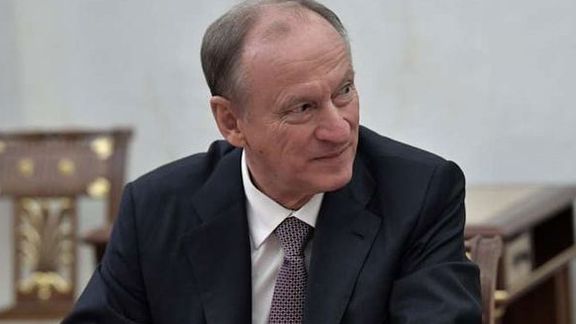
Russia’s national security chief visiting Iran discussed Ukraine and ways to combat "Western interference" in their internal affairs with his Iranian counterpart.
Russia's Security Council Secretary Nikolai Patrushev, a close ally of President Vladimir Putin met with Ali Shamkhani, the secretary of Iran's Supreme National Security Council, Russian state news agencies said.
Nour News Agency, affiliated with the Iranian Supreme National Security Council (SNSC), announced in an English tweet that Patrushev was invited by Shamkhani, adding that he will also hold meetings with other high-ranking Iranians to discuss cooperation between Tehran and Moscow.
Alongside Ukraine, the two discussed "information security, as well as measures to counter interference in the internal affairs of both countries by Western special services," the TASS news agency reported, citing a readout from the Russian Security Council press service.
"The economic potential of Russia and Iran and building foreign trade relations in the face of sanctions pressure was emphasized," it added.
Patrushev’s trip to Iran has raised considerable speculations that he might discuss the sale of Iranian ballistic missiles to Russia, which has already used Iranian suicide drones in Ukraine against civilian targets.
The Islamic Republic on Saturday finally admitted it has provided drones to Russia claiming that they were supplied months before the Ukrainian war.
Foreign Minister Hossein Amir-Abdollahian said Tehran provided Moscow with a limited number of drones months before the war, but if it is proven that Russia has used them against Ukraine, the Islamic Republic will not be indifferent to it.

After 18 months of talks to revive the JCPOA, an Obama-era nuclear accord with the United States, Iran presented demands in August that were unacceptable to Washington and negotiations broke down. Already in July the US had announced that Iran was preparing to supply drones to Russia.
Petrushev’s visit comes amid some criticism in Tehran of military aid to Moscow. The well-known conservative editor of a government newspaper asked the government on Monday why it did not ban Russia from using Iranian drones against Ukraine. Massih Mohajeri, the editor of Jomhouri Eslami (Islamic Republic) newspaper said the government must admit its mistake.
Some believe Iran publicly announced Patrushev’s arrival in Tehran to tell the world that the mutual ties between the Islamic Republic and Russia is deepening, and implicitly emphasize that a powerful Russian official turned to Iran for help in Ukraine.
However, the clerical regime is likely to boast of its strategic relations with Russia, signaling to its regional adversaries that the Kremlin is a constant powerful ally, although in fact it faces a possible defeat in Ukraine, with its military reputation in tatters.
Some others speculate the Iranian autocratic rulers are seeking Russian assistance to suppress the antigovernment protests that have swept the country since mid-September.
Late last month, the White House expressed concerns that Russia may be advising Tehran on best practices to suppress the ongoing protests in Iran.
White House press secretary Karine Jean-Pierre said during joint press briefing with Coordinator for Strategic Communications at the National Security Council in the White House John Kirby that Moscow may be helping the Islamic Republic, drawing on its own experience in suppressing open demonstrations.
Patrushev’s visit comes amid international outcry over the Islamic Republic’s supply of drones and ballistic missiles to Moscow. Kiev said earlier that Tehran plans to ship even more arms to Russia. Ukrainian intelligence agencies claimed the Islamic Republic is set to deliver more than 200 Shahed-136 and Arash-2 kamikaze drones, and Mohajer-6 reconnaissance and combat UAVs later in November.
With reporting by Reuters

French President Emmanuel Macron says the threats posed by the Islamic Republic have gone beyond the Middle East and they must be confronted with.
In an interview with Al-Arabiya Macron said, “We must change the way we deal with the Iranian threat in the world,” adding that sanctions against the clerical government should not harm its people.
Macron, who had traveled to Egypt to participate in the COP27 United Nations climate gathering, said “We must cooperate in an organized manner to counter Iran's threats.”
Earlier, British Prime Minister Rishi Sunak on the sidelines of the same gathering considered the actions of the Islamic Republic to be the cause of instability in the Middle East region.
He said in a meeting with UAE president Mohammed bin Zayed al-Nahyan that the situation in Iran has become complicated with the repression of the protesters after death of Mahsa Amini in September.
Previously, Britain announced it had sanctioned the “morality police” because of “several decades of threats, arrests and violence” against Iranian women.
Also, on Monday, the German government announced that the European Union will decide on the inclusion of the Revolutionary Guard in the new package of sanctions against the Islamic Republic.
Ties between the Islamic Republic and the West are increasingly strained with Germany being among the first that started evacuating the families of the personnel of its embassy in Tehran and the teachers of German-run schools.
In mid-October, the EU sanctioned eleven Iranian individuals and four organizations for their role in the death of Mahsa Amini and the crackdown on the ongoing protests.
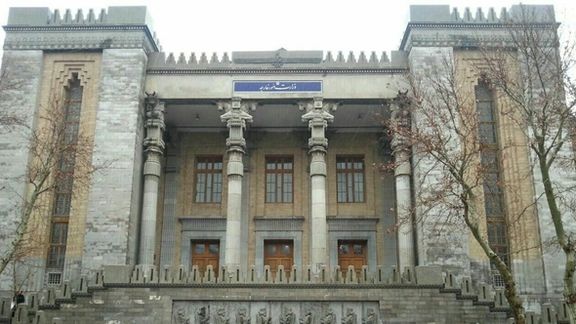
Iran’s Foreign Ministry has summoned the Norwegian ambassador over remarks made by the country’s parliament speaker criticizing the Islamic Republic over ongoing protests.
The Norwegian envoy to the Islamic Republic, Sigvald Tomin Hauge, was summoned by the ministry in protest to the “unacceptable statements” of the Speaker of the Parliament of this country against Iran.
Masud Gharahkhani, an Iranian-born lawmaker, and president of Norway’s parliament expressed solidarity with anti-government protests in Iran on Friday in an interview with Iran International.
“You’ve been in power for 44 years, enough is enough,” he addressed the Islamic Republic and its Supreme Leader Ali Khamenei in a message during his interview.
Iran called his remarks “interventionist” saying such statements are “unacceptable”.
This is the second time Iran summons Norway’s envoy over Gharahkhani’s remarks since September.
Meanwhile, an Iranian member of the Swedish parliament published a video on his Instagram page asking Iranian leaders Ali Khamenei, President Ebrahim Raisi and the IRGC commander Hossein Salami to pack their luggage and prepare to travel to the International Court of Justice in The Hague to be held accountable for their crimes.
Alireza Akhundi further called on the Iranian army to join the people and support the protesters.
According to the Norway-based Iran Human Rights Organization, at least 304 people have been killed during the recent protests that began across Iran after the killing of 22-year-old Mahsa Amini by police in custody.